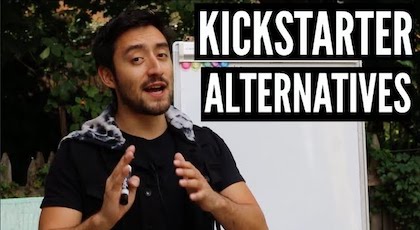Wondering about the differences between crowdfunding and venture capital dollars? Let’s see how crowdfunding compares to VC funding.
With this video, I want to give you a pretty accurate idea of how the funding process works, what to expect, and the differences between these two funding types.
They are similar in many ways, but there are also some pretty stark contrasts in terms of the amount that you can raise, the obligations after raising money, and how you go about doing a funding round.
Below, you’ll find a video that I put together for you walking you through how these two funding models compare and at the end of the video, you’ll see which one is right for your startup.
What did you think of the vid today?
If you liked it, can you give me a thumbs on YouTube? That way, other readers and viewers know that this one is worth their time.
Also, have you subscribed yet? I put out crowdfunding-related videos every single week. When you subscribe, you’ll get an email when they are released. Just remember to turn on notifications so that you get it.
From a fundamental level, I think that crowdfunding has been disrupting the way that companies are funded. It’s completely changing the game up. That’s why more VCs are asking what this crowdfunding thing is anyway.
Before getting into the nitty-gritty difference, we first have to ask how you want to be obligated to the funding dollars.
What happens after you raise money?
There is no such thing as free money. There are always costs associated with taking on capital for your business.
When it comes to VC funding, those costs take the form of giving up equity in your company and having to do everything in your power to maximize the value of your startup as soon as possible.
Remember, VCs want a return (ideally 10x) and don’t want to see you spend their money frugally or on things that aren’t going to accelerate the growth of your startup. They want you to grow fast.
You’re going to have to consider opportunities that you wouldn’t have to if you were a fully founder owned company. This could include things like selling your company or doing an IPO. These opportunities give your investors liquidity so that they can cash out.
You are under a tremendous amount of pressure when you take on VC funding. You have to make your company worth more money in a short amount of time.
When it comes to crowdfunding, the obligations are very different depending on the type of crowdfunding that you use. For example equity crowdfunding is similar to taking on capital from angel investors, but a rewards-based crowdfunding campaign on Kickstarter or Indiegogo is simply a pre-sale for your future product.
With a rewards-based crowdfunding campaign, the only obligation that you have is to deliver your rewards to your backers. You just gotta use the money to go out there, make your product, and deliver it to your backers.
There are more granular differences that I talk about in the video here, but these are some of the high-level differences between crowdfunding and VC dollars.
What do you have to do to get the money?
Another big difference between VC funding and crowdfunding is what you have to do to secure the money. In other words, how do you make the actual financial transaction happen.
Putting together VC funding round is notoriously difficult and will take time away from your company. As an entrepreneur, your time will be spent networking with VCs and trying to raise money for the company.
You don’t need thousand of VCs to make a financial round, however, you likely need one to four big ones that will make up your total round. Sometimes, one VC company will make up a funding round, but often times, it’s done with multiple companies working together.
Your time will be spent talking, doing presentations, keeping track of contacts, and creating an investor pipeline, and eventually keeping those investors happy with your progress.
Crowdfunding campaigns are a bit different because you’re drawing from an army of different investors or backers rather than just a handful of people. Your time will be spent generating interest by building an email list, building up social media profiles, and creating an effective pitch video. You can learn more about that here.
You also gotta make attractive reward tiers, write killer campaign text, and drive traffic to the campaign when it’s live.
A crowdfunding campaign will take considerable time and energy to pull off, but the way in which you spend that time will be different. You will also still be beholden to your backers. You gotta do a bit of customer service.
I hope that you found this video to be helpful. Go and subscribe for my weekly crowdfunding newsletter down below if you’d like me to send you content like this.




